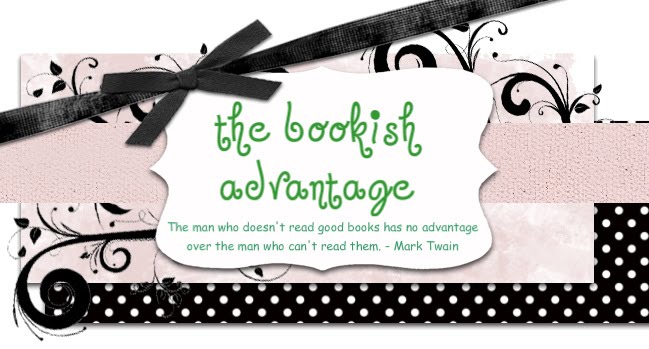Reflection: Engaging Readers and Writers With Inquiry by Jeffrey D. Wilhelm (Chapters 1-2)
“Without purpose, significant learning is difficult if not impossible to achieve.” (p. 8)
What I Learned:
Teaching with inquiry is all about teaching kids how to learn, not how to memorize (and then probably forget). The inquiry process is centered around “guiding questions” that lead students to connect their learning to the real world and to their own lives. Everything that is taught within the inquiry unit should be connected to the guiding question. Then, instead of memorizing the information, the students use information and materials presented to them to investigate and answer the guiding question. This leads them to develop a much deeper understanding than the “memorize for the test” method of teaching that is often used.
Wilhelm defines inquiry “as the process of addressing problems expressed by guiding questions” (p. 10) and points out that the guiding question could encompass an entire unit, or a simple lesson or activity. Inquiry is not the same as a student-centered projects or a student-generated curriculum, but rather, it is about teaching students to talk about, think about, and question topics in a very active way. Students in the inquiry-based classroom will collaborate with each other to deepen their understandings even further. Wilhelm even says: “The research base is clear: inquiry-oriented classrooms cultivate motivation and engagement, deeper conceptual and strategic understanding, higher-level thinking, productive habits of mind, and positive attitudes toward future learning, no matter the subject area.” (p. 16)
Teachers can use this inquiry based method to present class material in a way that connects to the kids, so that more meaningful learning occurs. Rather than a list of facts, students need to process information in a way that makes it a tool for further learning. The “First Actions to Take” (p. 25) and “Next Practical Steps: Three Key Moves” (p. 38) provide an easy to follow explanation of how to easily transform teaching from a teacher-led model to an inquiry-based model.
What I Think:
I have always been a proponent of connecting learning to real world situations and of teaching kids how to learn rather than how to memorize, so this inquiry-based learning seems to directly connect to my thoughts and provide another way of presenting material. The “First Actions to Take” (p. 25) and “Next Practical Steps: Three Key Moves” (p. 38) are the things that I need to work through to begin using this method in my own classroom.
What I Learned:
Teaching with inquiry is all about teaching kids how to learn, not how to memorize (and then probably forget). The inquiry process is centered around “guiding questions” that lead students to connect their learning to the real world and to their own lives. Everything that is taught within the inquiry unit should be connected to the guiding question. Then, instead of memorizing the information, the students use information and materials presented to them to investigate and answer the guiding question. This leads them to develop a much deeper understanding than the “memorize for the test” method of teaching that is often used.
Wilhelm defines inquiry “as the process of addressing problems expressed by guiding questions” (p. 10) and points out that the guiding question could encompass an entire unit, or a simple lesson or activity. Inquiry is not the same as a student-centered projects or a student-generated curriculum, but rather, it is about teaching students to talk about, think about, and question topics in a very active way. Students in the inquiry-based classroom will collaborate with each other to deepen their understandings even further. Wilhelm even says: “The research base is clear: inquiry-oriented classrooms cultivate motivation and engagement, deeper conceptual and strategic understanding, higher-level thinking, productive habits of mind, and positive attitudes toward future learning, no matter the subject area.” (p. 16)
Teachers can use this inquiry based method to present class material in a way that connects to the kids, so that more meaningful learning occurs. Rather than a list of facts, students need to process information in a way that makes it a tool for further learning. The “First Actions to Take” (p. 25) and “Next Practical Steps: Three Key Moves” (p. 38) provide an easy to follow explanation of how to easily transform teaching from a teacher-led model to an inquiry-based model.
What I Think:
I have always been a proponent of connecting learning to real world situations and of teaching kids how to learn rather than how to memorize, so this inquiry-based learning seems to directly connect to my thoughts and provide another way of presenting material. The “First Actions to Take” (p. 25) and “Next Practical Steps: Three Key Moves” (p. 38) are the things that I need to work through to begin using this method in my own classroom.
The biggest things to keep in mind are:
Questions:
How do textbooks work in an inquiry unit? There has to be information presented, but teachers aren’t supposed to use a lecture method. What are some other, less lecture-based, ways to get the information to the kids?
* Keep in mind what is important to me (the teacher) and the students, and then connect it to the curriculum (p. 25)Note: I really like the idea of having kids brainstorm things to do when they get frustrated (p. 23). It not only gives them suggestions of outlets, but reassures them that being frustrated will happen and is ok as long as we move through the frustration instead of letting it take over.
* Teach the students how to inquire and how to be an inquirer (p. 26). For most students, this will be a completely new experience, so I will need to model how to talk, think, and learn in this new style. There will also need to be situations for students to practice collaborating with each other, and my level of interaction may need to be higher at the beginning, so that I can model good collaboration.
(Practice, practice, practice!)
* “Learning occurs in a context and cannot be separated from or achieved apart from meaningful context in which it is developed and applied” (p. 27) --> If the students don’t have a meaningful context, there is no sense in presenting information because they won’t retain it or be able to apply it.
* “Knowledge is constructed socially…The goal of learning is not information but 'knowledge,’ which requires deep understanding and application” (p. 27). --> students need to question the material, interact with it, talk about it, evaluate it, and
manipulate it in order to form the deep understandings.
* As the teacher, I should participate as a collaborator, mentor, and guide. (p. 29) I think establishing this authoritative role will be exciting. I like to think that I am more authoritative than authoritarian already, but I know that there is always room to improve! I look forward to collaborating more with my students as we look toward the guiding questions.
* MAKE SURE the discussions are effective! (There are suggestions/guidelines on pages 36-37) --> Students should dominate the discussions while I’m acting as a guide.
Questions:
How do textbooks work in an inquiry unit? There has to be information presented, but teachers aren’t supposed to use a lecture method. What are some other, less lecture-based, ways to get the information to the kids?





0 comments:
Post a Comment